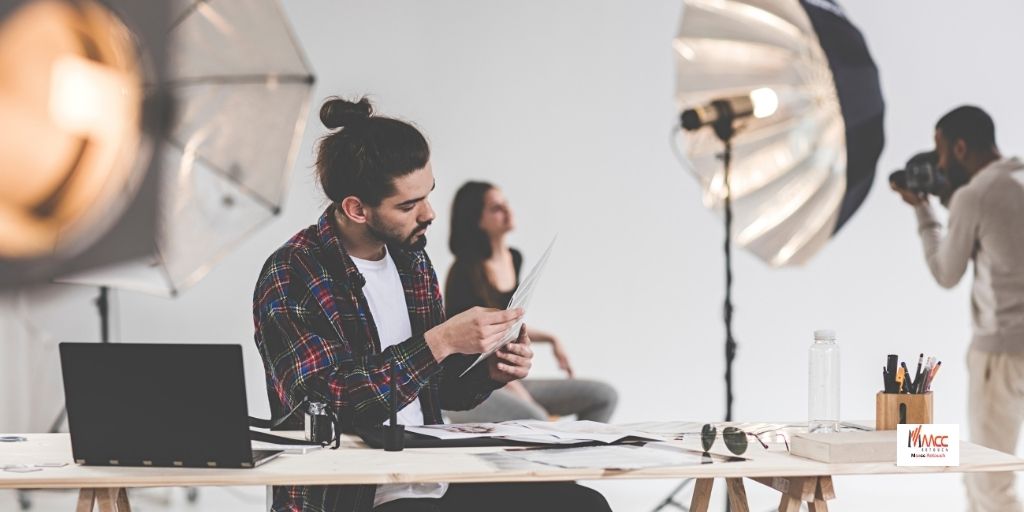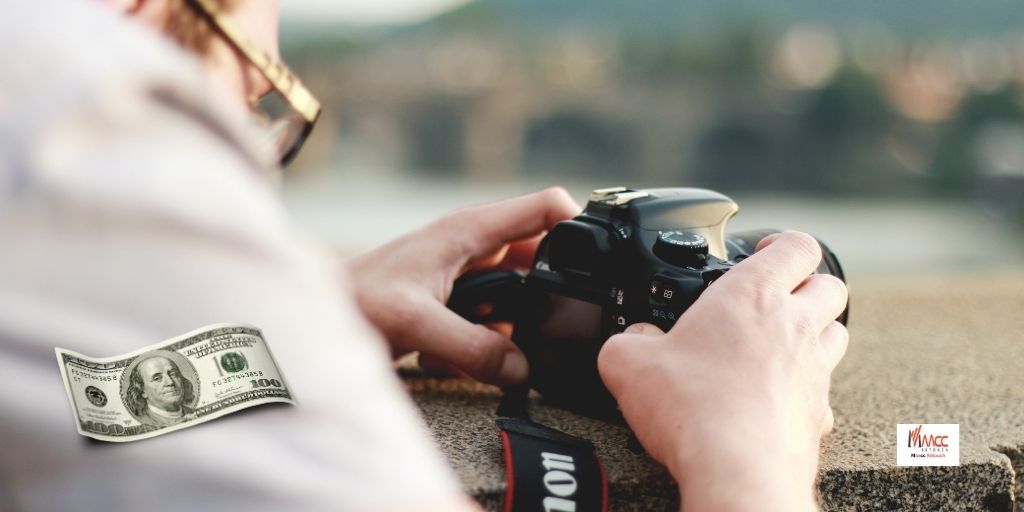Product photography plays a pivotal role in the success of any e-commerce business. It is the first impression that your audience gets of your product. Hence, the quality of your product photos can make or break the sale. One important aspect that can significantly enhance the aesthetics and appeal of your product photos is the use of shadows. This is where the Shadow Edit comes into play.
Our trusted partner in Product Photo retouching is brought to you by MAACC, the leading image editing service provider in the industry. We understand that in today’s fiercely competitive market, every pixel of your product images matters. That’s why we’re here to elevate your visuals to a whole new level of perfection, leaving your customers spellbound and your competitors envious.
This guide will take you through the process of shadow-editing product photos. It is designed for beginners as well as experienced photo editors who want to explore advanced shadow editing techniques. We’ll start with an overview of the basic concepts, then move on to more complex techniques, and finally, provide some tips and tricks to help you make the most out of your product photos.
What Is A Shadow Edit?
A shadow Edit is a technique in photo editing that involves the manipulation of shadows to improve the aesthetics and realism of an image. This editing process is particularly important in product photography, where shadows can significantly enhance the perception of the product, giving it a more three-dimensional and lifelike appearance.
A Shadow Edit is a photo editing technique that involves manipulating shadows in an image to enhance its visual appeal and realism. It plays a crucial role in product photography, where accurate representation and attention to detail can significantly influence a potential customer’s perception of the product. Shadow edits can give a product a three-dimensional appearance, making it look more lifelike and appealing. This technique involves creating, adjusting, or removing shadows to achieve the desired effect.
Why Use Shadows In The First Place?
Shadows play an integral role in photography, particularly in product photography, for several reasons:
Depth and Dimension: Shadows help create a sense of depth and dimension in an image. They provide the visual clues necessary to understand the shape and form of the object, making it appear more three-dimensional and realistic.
Visual Interest: The interplay of light and shadow adds visual interest to an image. It can make a photo more dramatic, create a mood, or direct the viewer’s attention to the product.
Context and Realism: Shadows can provide context. For example, a shadow might reveal that the product is sitting on a surface, or suspended in the air. They also add a level of realism to the image; a product without any shadows may appear artificial or edited.
Highlighting Features: Shadows can be used to subtly highlight important features of a product. By manipulating the shadow’s direction and intensity, you can draw attention to specific parts of the product.
Consistency: In a series of product photos, consistent use of shadows can give a uniform look and feel, which is essential for branding and professional presentation.
In essence, effective use of shadows can elevate your product photography, making your images more engaging, appealing, and convincing to potential customers.
Types of shadow edits
Shadow editing in product photography involves several techniques, each creating a unique effect. Let’s delve into the details of the five main types of shadow edits:
Drop Shadow
A drop shadow creates the illusion that the product is slightly elevated above its background, almost like it’s floating. This shadow is typically cast directly beneath the product and may be blurred at the edges, giving a soft, natural appearance. Drop shadows are useful for adding depth to an image and separating the product from the background.
Floating Shadow
Floating shadows are similar to drop shadows, but they are used when the product is presented as if it were floating in mid-air, rather than just elevated above a surface. The shadow is usually cast at an angle, imitating a light source from a specific direction. Floating shadows give a dynamic and interesting look to the product.
Reflection Shadow
Also known as mirror shadows, reflection shadows create the effect of the product being placed on a reflective surface, like glass or polished metal. The shadow in this case is a reflection of the product itself. It’s often used to give a luxurious and high-quality feel to the product.
Natural Shadow
Natural shadows are those that mimic the natural effect of light falling on an object. They are used to maintain the authentic look of the product in its environment. These shadows can have different shapes, sizes, and levels of opacity, depending on the light source.
Existing Shadow
Existing shadows refer to the shadows that are already present in the original photo. In some cases, these shadows may need to be enhanced, reduced, or manipulated in some other way to improve the overall look of the image. Existing shadow editing is all about working with what’s already there and making the most of it.
Each of these shadow edit types serves a unique purpose and can significantly enhance the aesthetics of your product photos when applied correctly. The type you choose will depend on your desired outcome, the nature of the product, and the overall visual style of your brand.
Ways to use shadow edits to improve product photos
Product photography plays a crucial role in the success of any e-commerce business. It’s the visual representation of your products that first catches the eye of potential customers. One way to enhance the appeal of your product photos is through the use of shadow edits. This technique can add depth, realism, and aesthetic appeal to your images. Here are some ways to use shadow edits to improve your product photos.
1. Add dimension to your white background photos
White backgrounds are popular in product photography due to their clean, uncluttered appearance. However, they can sometimes make a product appear flat or lack depth. By adding a subtle drop shadow or natural shadow through editing software, you can create an illusion of depth and dimension. The shadow acts as a visual cue, indicating that the product is three-dimensional. This gives the product a more tangible feel, making it more appealing to potential customers by suggesting a real-world presence that flat images often lack.
2. Make jewelry shine
Jewelry products benefit immensely from reflection shadows. These shadows, which mirror the shape and form of the product, can be added during post-processing to enhance the shine and allure of jewelry pieces. They create a sense of luxury and quality, intensifying the brilliance of the metals and gemstones. Reflection shadows can also suggest a polished, glossy surface upon which the jewelry rests, further enhancing the perception of value and desirability. This is particularly useful for online retailers where physical interaction with the product is not possible.
3. Fix distracting shadows or soften the harsh ones
Occasionally, product photos may include harsh or distracting shadows that detract from the product’s appeal. Shadow editing can rectify this by softening the sharp edges of shadows, reducing their opacity, or entirely removing them. This ensures the product remains the focal point of the image. Additionally, softening harsh shadows can help create a more balanced and harmonious image, leading to a more pleasant visual experience for potential customers. It’s all about creating a visual balance that complements the product.
4. Remove shadows of unwanted elements
Sometimes, product photos may contain shadows cast by unwanted elements or props. These can be distracting and take focus away from the product. Shadow editing allows you to selectively remove these shadows, ensuring the product remains the main focus. This helps to create a cleaner, more professional image, free of any unnecessary distractions. It’s crucial to maintain the viewer’s attention solely on the product, and removing unwanted shadows greatly contributes to achieving this objective.
5. Add unrealistic and creative shadows
For a unique, artistic approach, consider adding unrealistic or creative shadows to your product photos. This can create a visually striking image that grabs attention and sets your product apart from others. Whether it’s adding a long, dramatic shadow for a sunset effect or using multiple shadows for a surreal look, creative shadow editing can add a touch of whimsy and intrigue to your product photos. However, it’s important to use this technique judiciously and ensure it aligns with your brand image and product.
Remember, the goal of shadow editing is to enhance your product photos, making them more appealing while ensuring they remain realistic and authentic. Over-editing can lead to images that look artificial or overly manipulated, which can deter potential customers.
The Importance Of Shadow Editing For Product Photos
Product photos are crucial in today’s digital shopping environment, impacting consumer decisions. Shadow editing enhances visual appeal and influences purchasing decisions by enhancing the first interaction with the merchandise.
- Improves Product Appearance: Shadow editing can enhance the look of product photos, making them more appealing. It adds depth and dimension, making the product appear more realistic, which can influence purchasing decisions.
- Emphasizes Detail: Through shadow editing, subtle details of the product can be highlighted. This makes the product features more noticeable and attractive, providing a comprehensive view to potential customers.
- Creates Consistency: Shadow editing helps create a standard lighting effect across all product photos. This consistency in images presents a professional look, which can positively impact the brand’s image.
- Highlights of Product Quality: A well-placed shadow can emphasize the quality of a product. It can bring out the colors, textures, and materials used, giving potential buyers a clear idea of what they’re purchasing.
- Enhances Background: Shadows can help create contrast between the product and its background. This makes the product stand out, drawing the viewer’s focus to it
- Creates Visual Interest: Shadow editing can make product photos more dynamic and interesting. It adds an artistic touch, making the images more engaging to potential customers.
- Boosts Online Sales: High-quality, shadow-edited images can significantly boost online sales. Customers tend to trust and purchase from businesses that display clear, detailed, and attractive product images.
- Professional Presentation: Shadow editing adds a professional touch to your product photos. This can greatly enhance your brand’s reputation and perceived value in the market.
- Customer Perception: Well-edited photos with effective use of shadows can influence how customers perceive your product. It can make your product look more valuable and worth the price.
- Competitive Edge: In a market where consumers are flooded with choices, shadow-edited images give your products a competitive edge. They can make your products more noticeable and appealing in a crowded marketplace.
Shadows Help Create Product Images That Drive Sales
Shadows in product images can significantly enhance visual appeal, highlight details, and create contrast, influencing buyer decisions and driving sales in the competitive marketplace.
- Enhanced Visual Appeal: Shadows add depth and dimension to product images, making them more visually appealing. This three-dimensional effect can make the product look more realistic and tangible to online shoppers, encouraging them to make a purchase.
- Highlighting Product Features: Shadows can be strategically used to emphasize certain features of a product. They can bring out the contours, textures, and materials, giving potential customers a better understanding of the product’s quality and design.
- Creating Contrast: Shadows can create a contrast between the product and its background. This helps the product stand out and draws the viewer’s attention directly to it. A product that captures attention is more likely to drive sales.
- Consistent Product Images: Using shadow editing, businesses can ensure a consistent look and feel across all product images. This consistency can make the online store look more professional and trustworthy, which can boost customer confidence and increase the likelihood of sales.
- Creating a Sense of Context: Shadows can be used to give a sense of context about how the product will look in real life. For instance, a shadow can indicate the size of the product, or suggest how it might look under certain lighting conditions.
- Emotional Engagement: Shadows can add an artistic touch to product images, creating an emotional connection with potential buyers. This emotional engagement can influence purchasing decisions and drive sales
- Increased Click-Through Rates: Listings with high-quality, shadow-edited images are more likely to attract clicks in online marketplaces. More clicks often translate into higher sales.
- Boosts Conversion Rates: High-quality images have been shown to boost conversion rates on product pages. By utilizing shadow editing, businesses can create compelling product images that encourage visitors to convert into buyers.
- Competitive Advantage: In a crowded online marketplace, shadow-edited images can help a product stand out from the competition. This can give businesses a competitive advantage, helping them attract more customers and drive more sales.
- Improved Customer Perception: High-quality, shadow-edited images can influence how customers perceive the product and the brand. They can make the product look more premium and worth the price, encouraging customers to buy it.
Shadows are a powerful tool in product photography. They can enhance visual appeal, highlight product features, create contrast, and engage customers emotionally. Through the strategic use of shadow editing, businesses can create compelling product images that drive sales.
Outsource your shadow edits to a team of experts
Photography editing, especially shadow editing for product photos, is a specialized skill that requires a deep understanding of lighting, perspective, and photo editing software. Although it’s possible to learn and do it yourself, it can consume a significant amount of time and resources. This is why many businesses choose to outsource their shadow editing to a team of experts.
Why Outsource Shadow Editing?
Outsourcing your shadow edits can provide several benefits:
- Expertise and Quality: Professional editing teams have the experience and expertise to create high-quality edits. They know the best techniques to use for different types of products and can ensure the shadows look natural and appealing.
- Efficiency: Professional editors can complete the work quickly, allowing you to get your product photos ready for use sooner.
- Consistency: Professionals ensure that the shadow edits are consistent across all your product photos, which is crucial for maintaining a cohesive brand image.
- Cost-Effective: Outsourcing can be cost-effective in the long run as it eliminates the need for in-house resources for photo editing. You only pay for the services you need.
- Time-Saving: By outsourcing the edits, you can focus your time on other important aspects of your business.
To get the most out of outsourcing, it’s important to choose a reputable and experienced editing team. Look for teams that have experience in product photography editing, a strong portfolio, positive client reviews, and a clear understanding of your brand’s aesthetic.
Outsourcing your shadow edits to a team of experts can significantly enhance the quality of your product photos, making them more effective in attracting customers and driving sales.
Things To Keep in mind while Choosing an outsourcing company for Retouching
Choosing the right outsourcing company for retouching services can be crucial for your brand’s image and overall business success. Here are some important factors to consider during the selection process:
- Portfolio and Quality of Work: The company’s portfolio is the first thing you should look at. It will give you a clear picture of the quality and style of their work. Check if their retouching skills match your brand’s aesthetic and quality standards.
- Experience and Expertise: Experience matters a lot in photo retouching. An experienced company will have a broad understanding of different industries, styles, and trends. They should also be proficient in using advanced retouching tools and techniques.
- Turnaround Time: In a fast-paced business environment, quick turnaround times are essential. The company should be able to deliver high-quality work within your specified deadlines.
- Pricing: While you shouldn’t compromise on quality for the sake of cost, it’s important to find a service that fits within your budget. Be wary of services that are significantly cheaper than the average market rate, as the quality might not be up to par.
- Confidentiality: The company should have stringent measures in place to ensure the confidentiality and security of your images. They should be willing to sign a non-disclosure agreement if necessary.
- Customer Service: A company that provides excellent customer service is always a good sign. They should be responsive, willing to understand your specific needs, and open to feedback and revisions.
- Testimonials and Reviews: Check what their past and present clients are saying about them. Reviews and testimonials can provide valuable insights into the company’s reliability, professionalism, and quality of service.
- Flexibility: Every project has different requirements. The company should be flexible and capable of adapting its services to meet your specific needs.
- Scalability: If your business grows or has seasonal fluctuations, the company should be able to scale its services accordingly.
- Technology and Software: Make sure the company uses the latest photo retouching software and follows the industry’s best practices.
Selecting the right outsourcing company for photo retouching is a decision that should be made carefully. Keeping these points in mind will help you make a well-informed choice that aligns with your business needs and goals.
Resources for Learning Shadow Editing Techniques
Absolutely. There are numerous resources available to learn shadow editing techniques. Whether you’re a beginner or an experienced photographer looking to hone your skills, you’ll find these platforms quite useful:
- Lynda (LinkedIn Learning): Lynda features a plethora of photography and photo editing courses. Topics range from basic to advanced techniques, including shadow editing.
- Udemy: Udemy is an online learning platform featuring thousands of courses on various topics. Search for “Product Photography” or “Photo Editing” courses to find content about shadow editing.
- YouTube: Numerous photographers and graphic designers share their knowledge on YouTube for free. Channels like PHLEARN, the Photoshop Training Channel, and PiXimperfect have tutorials on a wide range of Photoshop techniques, including shadow editing.
- Adobe’s Tutorials: Adobe, the creator of Photoshop, offers extensive tutorials on its platform. Their tutorials cover all aspects of photo editing, including creating and editing shadows.
- Skillshare: Skillshare is another online learning community with thousands of classes in photography, design, and more. You can find specific classes on photo editing and shadow manipulation.
- Photography Blogs: Blogs like Digital Photography School, Fstoppers, and PetaPixel frequently publish articles and tutorials about various aspects of photography and photo editing.
Remember, mastering shadow editing techniques requires practice. So, once you’ve learned new techniques, apply them to your work and experiment to see how they change the look and feel of your photos. Happy editing!
Conclusion
In conclusion, shadow editing plays a pivotal role in product photography, enhancing the visual appeal and highlighting key features of products. It not only creates a professional and consistent image presentation but also influences customer perception and purchasing decisions, ultimately driving sales and offering a competitive edge in the marketplace.






